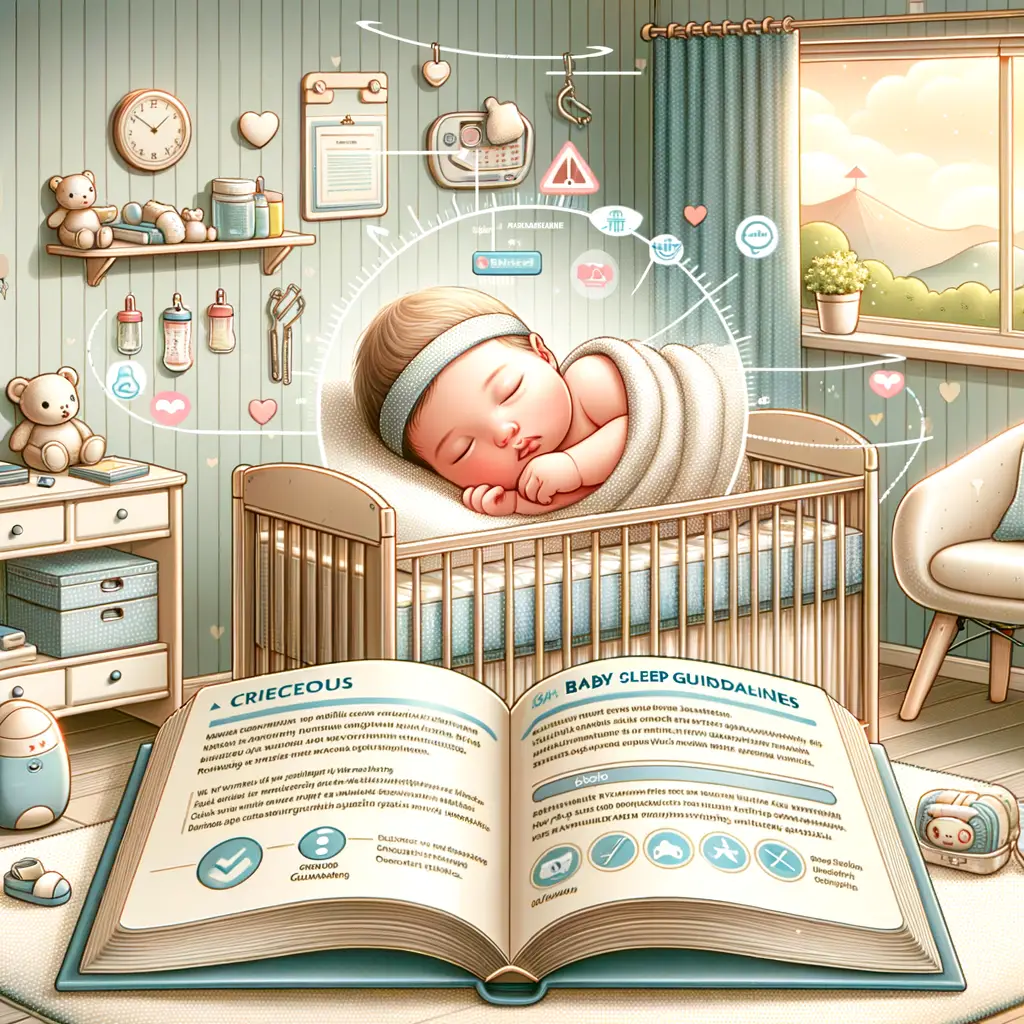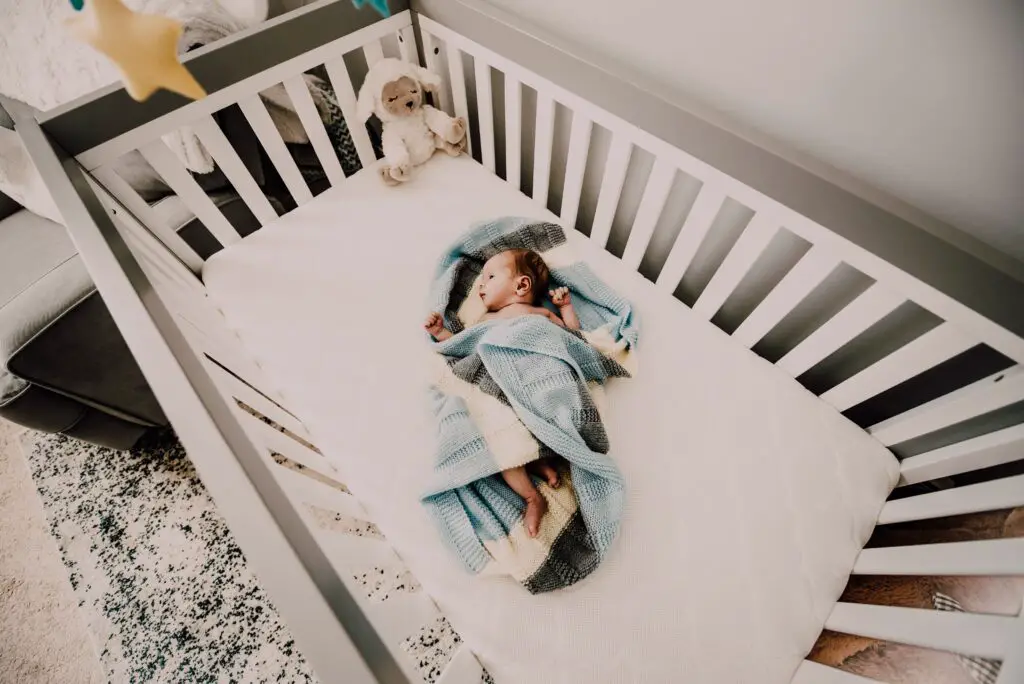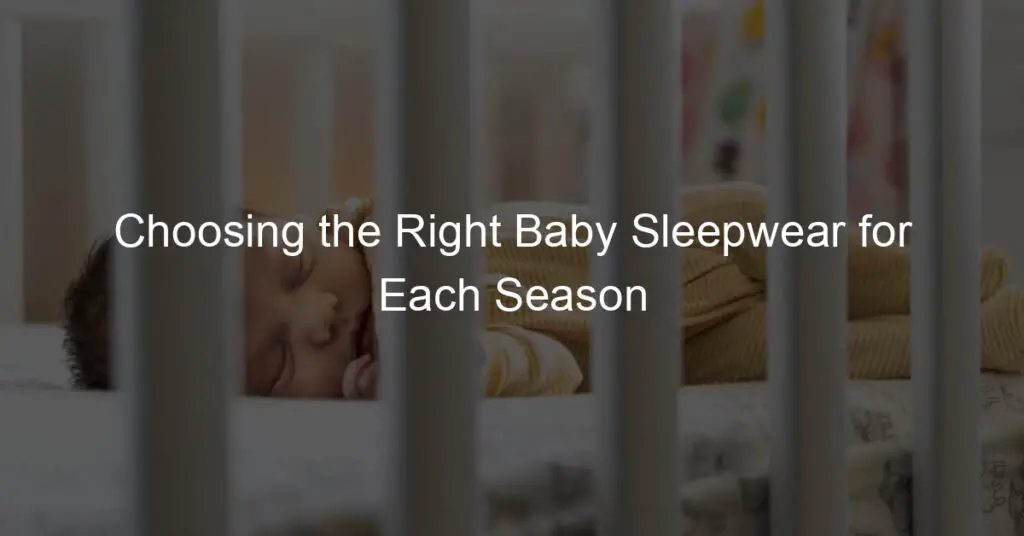Introduction to Babies Sleeping Habits
Understanding the sleep habits of babies is crucial for every parent. Babies, especially newborns, have unique sleep patterns that can be quite different from adults. In this section, we will delve into the fascinating world of newborn sleep patterns and discuss why sleep is so important for these tiny beings.
Understanding Newborn Sleep Patterns
Newborns sleep a lot, typically around 16 to 17 hours a day. But their sleep isn’t the long, uninterrupted stretches that adults are used to. Instead, it’s distributed throughout the day and night, with periods of 1 to 3 hours spent awake. This pattern is due to their internal biological clock, or circadian rhythm, which isn’t fully developed yet. Circadian rhythm is what helps us feel awake during the day and sleepy at night. But in newborns, this rhythm is still developing, which is why their sleep schedule can seem erratic to adults.
Importance of Sleep for Newborns
Sleep is incredibly important for newborns as it directly impacts their growth and development. During sleep, their bodies work hard to grow and develop. In fact, the growth hormone is primarily secreted during deep sleep. Additionally, sleep is crucial for the development of their brain. It’s during sleep that the brain forms connections that allow your baby to learn and develop cognitive skills. Therefore, ensuring that your newborn gets enough sleep is crucial for their overall health and well-being.
Newborn Sleep in Own Room: The Debate
When it comes to newborn sleep, one of the most debated topics is whether the baby should sleep in their own room or not. There are several pros and cons to consider, and various research studies provide valuable insights into this issue.
Pros and Cons of Newborn Sleep in Own Room
Let’s start by examining the advantages and disadvantages of having a newborn sleep in their own room.
Pros:
Independence: It can help the baby develop independence at an early age.
Quality Sleep: Both parents and baby might experience better sleep quality without the disturbances from each other’s sleep patterns.
Space: Parents get to have their own space, which can be important for their mental health.
Cons:
Accessibility: Frequent nighttime feedings can be more challenging as parents have to move to another room.
Anxiety: Parents might feel anxious being separated from their newborn.
Safety: There could be potential safety issues if the baby’s room is not properly baby-proofed.
Case Studies and Research Findings
Several research studies have been conducted on this topic. Let’s look at some of the key findings.
A study published in the Pediatrics Journal found that babies who sleep in their own rooms after 4 months of age have longer sleep stretches than those who co-sleep with their parents.
However, the American Academy of Pediatrics recommends that babies should sleep in the same room as their parents (but not in the same bed) for at least the first 6 months, and preferably up to a year, to reduce the risk of Sudden Infant Death Syndrome (SIDS).
Ultimately, the decision of where your newborn should sleep depends on what works best for your family. It’s important to weigh the pros and cons, consider the research, and consult with your pediatrician.
Infant Sleep Safety Guidelines
Ensuring your infant’s safety during sleep is crucial. It not only promotes healthy growth but also prevents potential risks. This section will guide you on how to create a safe sleep environment, understand SIDS, and learn the appropriate sleep positions for newborns.
Creating a Safe Sleep Environment
Creating a safe sleep environment for your baby is the first step towards ensuring their safety. Here are some tips:
Use a firm sleep surface, such as a mattress in a safety-approved crib.
Keep soft objects, loose bedding, or any objects that could increase the risk of entrapment, suffocation, or strangulation out of the baby’s sleep area.
Make sure the baby’s sleep area is always clean and dry.
Ensure the room temperature is comfortable and not too warm.
Understanding SIDS and How to Prevent It
Sudden Infant Death Syndrome (SIDS) is the unexplained death, usually during sleep, of a seemingly healthy baby less than a year old. To reduce the risk of SIDS:
Put your baby to sleep on his or her back.
Keep the crib as bare as possible.
Don’t smoke around your baby.
Get regular prenatal care.
For more information about SIDS, you can visit the Wikipedia page.
Appropriate Sleep Positions for Newborns
The safest sleep position for a baby is on his or her back. This position reduces the risk of SIDS. Once your baby is old enough to roll over both ways, which usually happens around 6 months, they can choose their own sleep position.
Remember, every baby is unique and may require different sleep safety measures. Always consult with a healthcare provider if you have any concerns.
Baby Room Preparation

Preparing a room for your newborn is an exciting task. It’s essential to make sure that everything in the room is safe and comfortable for your baby. One of the most critical aspects of baby room preparation is choosing the right furniture.
Choosing the Right Furniture
When it comes to furniture, safety and comfort should be your top priorities. Here are a few tips to help you make the right choices:
Selecting a safe crib
A crib is where your baby will spend most of their time, so it’s crucial to choose one that’s safe and comfortable. The crib should have a firm mattress and tight-fitting sheets. The slats should be no more than 2 3/8 inches apart to prevent your baby’s head from slipping through. Avoid cribs with drop sides as they can pose a safety hazard. For more information on crib safety, you can visit the Wikipedia page on infant bed safety.
Choosing baby-friendly materials
When choosing furniture, consider the materials used. Opt for furniture made from non-toxic, baby-friendly materials. Avoid furniture with sharp edges or small parts that a baby could swallow. Also, consider the paint used on the furniture. It should be lead-free and non-toxic. Remember, your baby will be spending a lot of time in this room, so it’s essential to create a safe and healthy environment.
In conclusion, preparing a baby room involves careful selection of furniture. Always prioritize safety and comfort when making your choices. With the right furniture, you can create a safe and comfortable environment for your baby.
Setting the Right Temperature
One of the most important aspects of preparing a baby’s room is setting the right temperature. This is crucial for the baby’s comfort and safety. Let’s explore the optimal room temperature for baby sleep and how to monitor and adjust it.
Optimal Room Temperature for Baby Sleep
The American Academy of Pediatrics suggests that the optimal room temperature for a baby’s sleep is between 68 and 72 degrees Fahrenheit (20-22 degrees Celsius). This temperature range is considered safe and comfortable for your baby. It’s important to note that babies can’t regulate their body temperature as adults do, so maintaining a consistent room temperature is key.
How to Monitor and Adjust Room Temperature
Monitoring and adjusting the room temperature is essential to ensure your baby’s comfort and safety. A simple room thermometer can help you keep track of the temperature. If the room is too warm, you can use a fan or air conditioner to cool it down. If it’s too cold, a safe space heater or increasing the home’s heat can help. Remember, it’s not just about the air temperature. The baby’s clothing and bedding also play a role in keeping them comfortable. Dress your baby in light layers and adjust as needed.
Setting the right temperature is a simple but effective step in creating a safe and comfortable environment for your baby. Keep these tips in mind as you prepare your baby’s room.
Baby Sleep Training Techniques

Training your baby to sleep can be a challenging task for new parents. However, with the right techniques, it can be made easier. Here are some methods that can help your baby sleep better and longer:
Establishing a Bedtime Routine
Creating a consistent bedtime routine can signal to your baby that it’s time to sleep. This routine could include activities like bathing, reading a story, or singing a lullaby. According to a study, babies who follow a bedtime routine fall asleep faster and wake up less often during the night.
Teaching Self-Soothing Techniques
Self-soothing is a vital skill for babies to learn. It involves teaching your baby to calm themselves and fall back to sleep if they wake up during the night. You can teach self-soothing by putting your baby to bed when they’re drowsy but still awake, allowing them to fall asleep on their own. It may take some time, but with patience, your baby will learn to self-soothe.
Handling Night Wakings and Feedings
It’s normal for babies to wake up during the night for feedings. However, as they grow older, they will need fewer night feedings. You can gradually reduce the number of night feedings by slowly increasing the time between feedings. Remember, it’s important to consult with your pediatrician before making any significant changes to your baby’s feeding schedule.
Remember, every baby is different, and what works for one might not work for another. It’s important to be patient and flexible in your approach. With time and consistency, your baby will develop good sleep habits.
First-Time Parenting Tips for Newborn Care
As a new parent, understanding and caring for your newborn can be a challenging task. However, with a little patience and knowledge, you can navigate this journey with ease. Here are some tips to help you understand your baby’s sleep cues, handle sleep regressions, and know when to seek professional help.
Understanding Your Baby’s Sleep Cues
Newborns have a unique way of communicating their needs. When it comes to sleep, they often show signs of tiredness such as rubbing their eyes, yawning, or becoming fussy. Recognizing these cues can help you put your baby to sleep before they become overtired, which can make it harder for them to fall asleep. Read more about baby’s sleep cues on Wikipedia.
How to Handle Sleep Regressions
Sleep regressions are periods when a baby who has been sleeping well suddenly starts waking up more often or has trouble falling asleep. This can be due to growth spurts, teething, or changes in their routine. During these times, it’s important to maintain a consistent sleep schedule and soothing bedtime routine. It may be a tough phase, but remember, it’s just temporary. Learn more about sleep regressions on Wikipedia.
When to Seek Professional Help
If your baby consistently has trouble sleeping, or their sleep problems are causing significant distress, it may be time to seek professional help. A healthcare professional can provide guidance and rule out any underlying medical conditions. It’s always better to seek help sooner rather than later when it comes to your baby’s health and well-being. Find more information about when to seek professional help on Wikipedia.
Remember, every baby is unique and what works for one might not work for another. Patience, consistency, and love are the key ingredients in caring for your newborn. You’re doing a great job, keep going!
Conclusion: Balancing Newborn Sleep Safety and Independence
As we wrap up this comprehensive guide, it’s crucial to remember that every baby is unique, and what works for one may not work for another. However, the key to successful sleep training and ensuring your baby’s safety is finding the right balance. Let’s recap the essential points and conclude with some final thoughts on baby sleep guidelines.
Key takeaways on newborn sleep in own room
Having your newborn sleep in their own room can foster independence and better sleep habits. It’s essential to ensure that the room is safe, with a firm mattress, tight-fitting sheets, and no loose items that could pose a suffocation risk. The baby’s room should be at a comfortable temperature, and the crib should be placed away from windows, heaters, and cords. Wikipedia provides more in-depth information on infant bed safety.
Final thoughts on baby sleep guidelines
Baby sleep guidelines are designed to provide a safe and comfortable environment for your baby. Following these guidelines can reduce the risk of Sudden Infant Death Syndrome (SIDS) and other sleep-related accidents. However, remember that these are guidelines, not strict rules. It’s important to observe your baby’s behavior and adjust accordingly. For instance, some babies may need more sleep than others, and some may not be ready to sleep in their own room right away. Patience and flexibility are key.
In conclusion, the journey of parenthood is filled with trials and triumphs. It’s a learning process for both you and your baby. By following safety guidelines and fostering independence, you can ensure that your baby develops healthy sleep habits that will benefit them in the long run. Remember, you’re doing a great job, and every step you take is a step towards your baby’s well-being.














